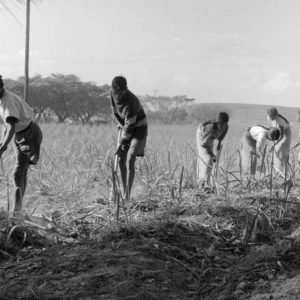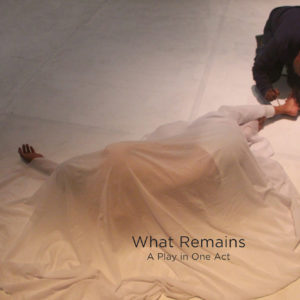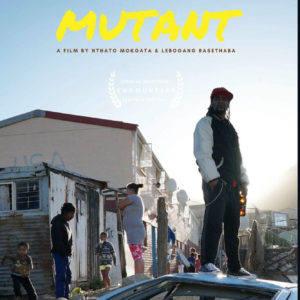Book Review | CA Davids’ mission against forgetting
The writer’s second novel takes on memory, drawing together disparate threads across continents and epochs to construct a story with humanity at its heart.
Author:
6 April 2022

The writer CA Davids’ debut, The Blacks of Cape Town, appeared on shelves nearly a decade ago and showed glimmers of the bright talents which are fully displayed in her recently published second novel, How to be a Revolutionary.
Stripped to bare bones, The Blacks of Cape Town is a multi-generational family saga that stretches from the diamond rush in Kimberley in the 1800s to the twilight of Thabo Mbeki’s presidency. The novel is set in motion when Zara, a historian on a postdoctoral fellowship at a university in the US, receives a letter from the South African government naming her late father, an anti-apartheid activist, “among the traitors, conspirators and betrayers of their time”.
The allegations propel Zara to dig into her family’s origins: a past which includes a grandfather who “had thrown a shadow on three generations” of his descendants by passing for white and changing his surname to Black. But The Blacks of Cape Town is so much more than a novel about a family’s origins. It is a meditation on loss, race and the demands the past places on us both as individuals and as a collective.
How to be a Revolutionary draws on seemingly disparate minor and major catastrophes of the 20th century: Mao Zedong’s insane plan to remake China (The Great Leap Forward and the resulting deaths of millions from famine), the 1989 uprising at Tiananmen Square and the state’s brutal response, apartheid in South Africa and US senator Joseph McCarthy’s campaign against alleged communists in that country during the immediate post-World War II period. But the pulse at its centre is the death of Cape Town activists Coline Williams and Robbie Waterwhich.
Related article:
The young Umkhonto weSizwe operatives were barely in their twenties when, according to the side of the story offered up by the apartheid authorities, they were torn to shreds when the limpet mine with which they had intended to bomb Athlone Magistrate’s Court detonated prematurely. The families of the two activists believe that they were assassinated. And, some 30 years later, the case is still unsolved and remains shrouded in intrigue. (The Truth and Reconciliation Commission (TRC) could not establish the truth of what happened on the night of 23 July 1989. The matter was recommended for further investigation by the National Prosecuting Authority where it still lingers.)
In his book, Farthest Field: An Indian Story of the Second World War, journalist Raghu Karnad writes that people die twice: first at the end of their lives and, again, “at the end of the memory of their lives”. One of the tasks Davids has set for herself with this novel, one suspects, is to prevent the memory of Coline Williams’ life and, by extension, Robbie Waterwhich, from slipping into oblivion.
“I must construct a human being, bit by bit, building her whole from bones, dragged from the grave,” Beth, Davids’ central character, says to herself later in the novel when she is standing before the TRC.
Coline, or rather a character inspired by her, appears in How to be a Revolutionary as Kalliope, or Kay, a vociferous teenage activist from a rough neighbourhood in Cape Town whose father is serving a long sentence on Robben Island for treason. It is from Kay that the novel gets its title. Wise beyond her years, she knows things that Beth herself would like to know. “How to light a new cigarette from a stompie. How to argue dialectical materialism. How to apply lessons from Communist China to South Africa … How to erect a barrier of burning tires across the main road … How to lead a group of students to a mass rally … How to shout ‘Amandla!’ without sounding sturvy … How to be a revolutionary.”
Threading connections
Much like in Davids’ earlier work, How to be a Revolutionary shifts between continents and epochs to thread connections between seemingly disparate historical upheavals.
Beth is much older when we first encounter her; on the brink of divorce, a diplomat newly arrived in Shanghai. A post she accepts as a way of severing ties with her old life. Both her marriage to Andrew back in South Africa and the home they built together – “slowly growing old, losing its shine and becoming more lopsided” – mirror the trajectory of the country itself. The hope and optimism of the early years gradually usurped by energies much darker.
“When did it start?” Beth asks early in the novel. “That creeping, unnerving corruption that seems immovable now? When did it start to settle into our [government] departments and, it seemed, onto everything in the country, like a layer of grease?”
Related article:
Beth is kept awake in her apartment in Shanghai by “the repetitive beat of typewriter keys” coming from the unit directly above her. Then one evening, Zhao, her upstairs neighbour, an elderly man with “silver hair that hung around his ears”, knocks on her door. This marks the beginning of an unlikely friendship between two people each in their own way haunted by the past.
In a recent interview with the Sunday Times, Davids spoke about her interest in bonds of mutual support and solidarity that grow between people, “where there is a level of unevenness; notable disparities in age, or experience, even financial or emotional ability”. And How to be a Revolutionary is shot through with such friendships. Beth is from a middle-class and politically conservative family which makes her friendship with Kay, who comes from the “wrong side of the tracks”, unlikely.
Another improbable friendship which is important to the novel is the real-life correspondence struck up between the Drum magazine writers (Es’kia Mphahlele, Henry Nxumalo, Bloke Modisane, among others) and American poet Langston Hughes in the 1950s.
An ambition that astonishes
One would think that all this material that Davids draws on would cause How to be a Revolutionary to sag or collapse under the weight of its own outsized ambitions but the novel holds up astonishingly well, in part because of its structural ingenuity. It shifts between different voices and modes of writing with ease.
Beth lends Zhao a book of Langston Hughes’ letters to Richard Rive – and that is how the poet’s voice enters the world of the novel.
The fictionalised letters, which revolve largely around Hughes’ appearance before Senator McCarthy in 1953 to answer questions about communist influences in his writing, are reproduced in the pages of How to be a Revolutionary. Then one day Zhao, a journalist – or to put it more bluntly, a government mouthpiece in a former life – disappears. Chunks of his typewritten manuscript, a devastating account of the millions who died from hunger during the Great Chinese Leap Forward, begin appearing at Beth’s doorstep in the middle of the night.
Related article:
Reading Zhao’s manuscript, which also appears in the pages of the novel, causes Beth’s repressed memories of what happened to Kay to rise to the surface.
Circling back to The Blacks of Cape Town, one of the characters in that novel says to Zara, “We have painted over the past as it was, and replaced it with something which is pleasing to the eye. A one dimensional story!”
How to be a Revolutionary asks us to pay attention to the stories we tell about the past; not only to what we remember but how we remember. In this astonishingly brilliant novel, Davids reminds us that we cannot build new and just futures on the back of historical distortions and silences.



